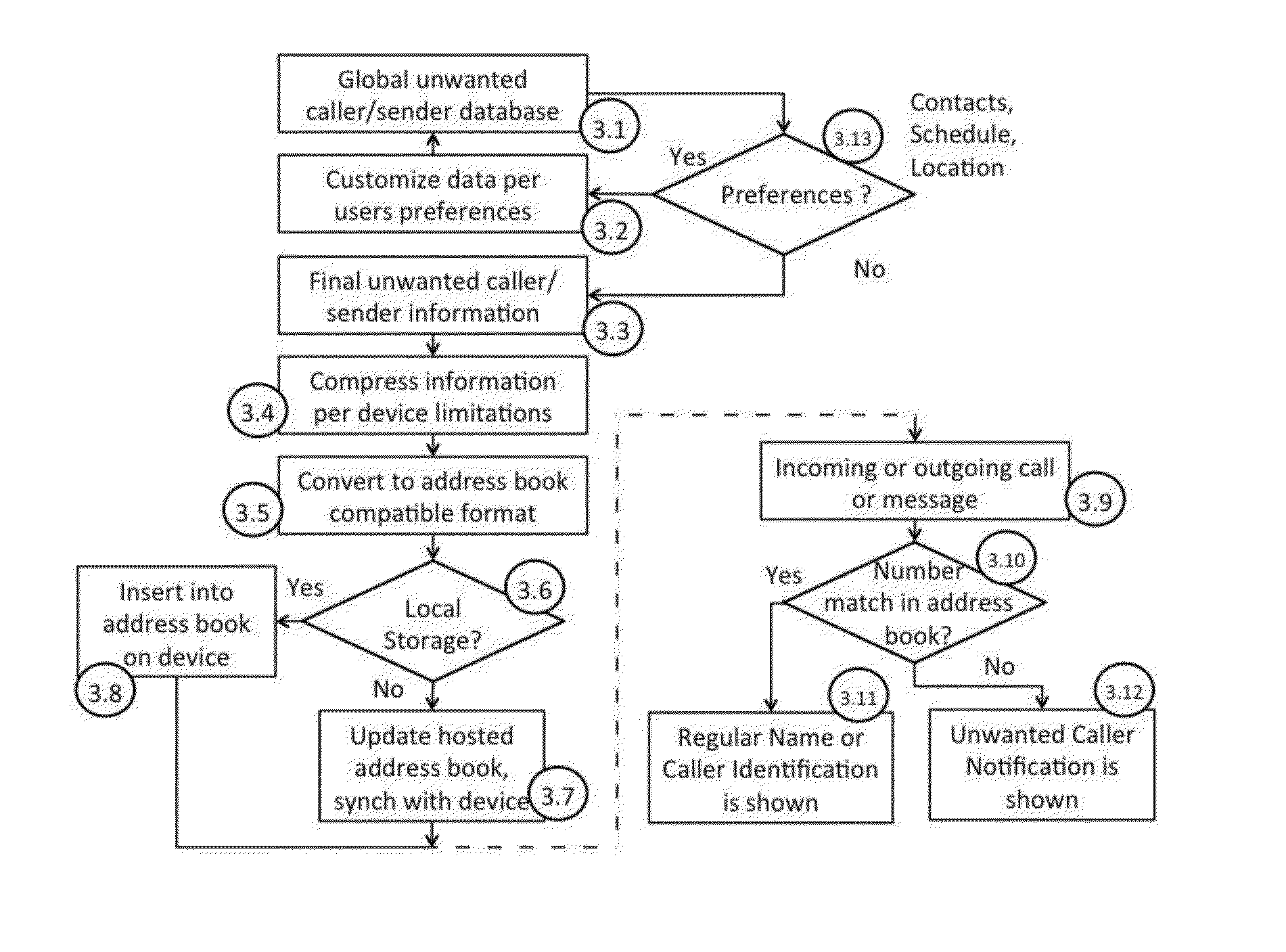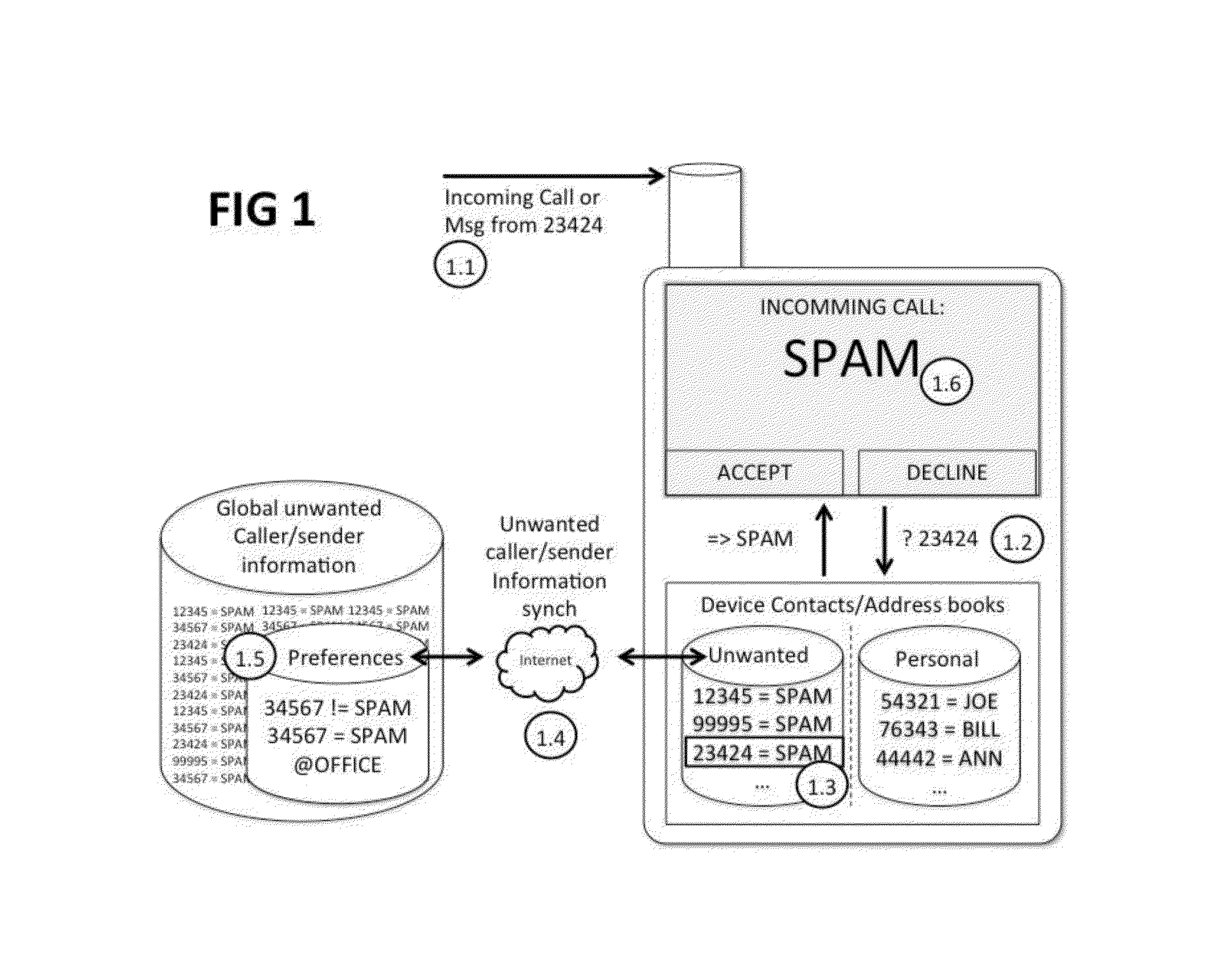Unwanted caller and message sender identification for restricted communication devices
a technology for restricted communication devices and unwanted callers, applied in special services for subscribers, location information based services, electrical equipment, etc., can solve problems such as methods failing, methods failing, and methods failing
- Summary
- Abstract
- Description
- Claims
- Application Information
AI Technical Summary
Benefits of technology
Problems solved by technology
Method used
Image
Examples
Embodiment Construction
[0019]FIG. 1-3 and the following description depict specific exemplary embodiments of the invention to teach those skilled in the art how to make and use the invention. For the purpose of teaching inventive principles, some conventional aspects of the invention have been simplified or omitted. Those skilled in the art will appreciate variations from these embodiments that fall within the scope of the invention. Those skilled in the art will appreciate that the features described below can be combined in various ways to form multiple variations of the invention. As a result, the invention is not limited to the specific embodiments described below. but only by the claims and their equivalents.
[0020]FIG. 1 depicts an exemplary embodiment of the method of an unwanted caller notification, generated by a communication device's default caller ID service. Assume that a communication device receives an incoming call from an exemplary phone number 23424 (1.1). The communication device's defau...
PUM
 Login to View More
Login to View More Abstract
Description
Claims
Application Information
 Login to View More
Login to View More - R&D
- Intellectual Property
- Life Sciences
- Materials
- Tech Scout
- Unparalleled Data Quality
- Higher Quality Content
- 60% Fewer Hallucinations
Browse by: Latest US Patents, China's latest patents, Technical Efficacy Thesaurus, Application Domain, Technology Topic, Popular Technical Reports.
© 2025 PatSnap. All rights reserved.Legal|Privacy policy|Modern Slavery Act Transparency Statement|Sitemap|About US| Contact US: help@patsnap.com



